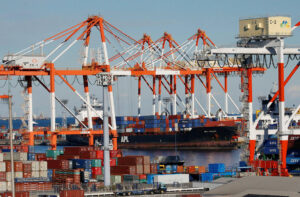MULTINATIONAL GROUPS seeking to diversify their supply chains are considered the main opportunity for Association of Southeast Asian Nations (ASEAN) economies seeking to attract investment, the UN Trade and Development (UNCTAD) said.
“What’s happening in the global investment environment today is leading multinational enterprises looking for opportunities to make their supply chains more resilient, to diversify their supply chains,” UNCTAD Head of Investment Research Richard Bolwijn told BusinessWorld on the sidelines of the Invest Korea Summit on Thursday.
“That presents opportunities for countries across the ASEAN region to attract investment in new production locations for supply chain-intensive manufacturing,” he added.
He said infrastructure and skills will be key to attracting such investment.
“The factors that decide whether a country can be competitive in this are having good infrastructure, having the right skills across the labor force, and having the capacity to absorb the technologies needed to produce and to have market access,” he said.
“Investment of that nature will increasingly regionalize, or will increasingly be within the region,” he added.
The ASEAN Investment Report 2025, released this month, indicated that foreign direct investment (FDI) in ASEAN increased 8% to $226 billion, in the face of an 11% decline in global flows.
“Since 2021, FDI in the region has been exceptionally strong, with annual inflows exceeding $200 billion, compared with an annual average during the last decade of less than $130 billion,” the report added.
UNCTAD estimates global FDI to decline by approximately 3% this year, following an 11% decline last year, Mr. Bolwijn said.
“Greenfield announcements around the world are declining; international project finance is having a really hard time because of tighter financing conditions. The only area that is growing around the world is the digital economy area of investments,” he said.
However, he said that while bigger projects are being announced, they are fewer in number.
“You need to be attractive for those types of projects, but as I said, with fewer but very large projects, fewer countries can attract them,” he said.
Nearly 30% of new project announcements last year involved the digital economy, compared to less than 20% in 2020, he said.
“The only sectors that are growing are digital infrastructure and services, which were up more than double. If we look at semiconductors, it rose 140%,” he said, with digital-economy investments dominated by rich countries.
“It is becoming, of course, for countries that are lower down on the development ladder, increasingly difficult to compete for new investment because it is more knowledge-intensive and more technology-intensive. It can be hard, as a country, to become attractive for that type of investment,” he said. — Justine Irish D. Tabile






